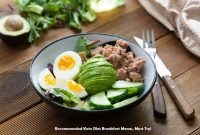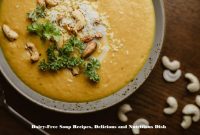The heart is one of the vital organs in the human body that must be maintained. This is because of its important function in pumping blood throughout the body. With the aim of ensuring that every cell gets oxygen and balanced nutrition. Meanwhile, one way to maintain its health is by implementing heart-healthy eating.

Practical and Cheap Heart-Healthy Eating
Unhealthy food intake, such as high saturated fat, salt and lots of sugar, can cause various disorders. For example, high blood pressure, cholesterol and coronary heart disease.
Without intake that supports heart health, the risk of cardiovascular disease will increase significantly. This can cause serious complications, including heart attacks and strokes. Therefore, maintaining heart health through a healthy diet is very important.
Some people may think that heart-healthy foods tend to be complicated and expensive. In fact, we can choose simple types of ingredients that are cheap but healthy. Here is heart-healthy eating, complete with nutritional content, benefits and how to process them.
1. Peas
The first choice is peas which are rich in fiber, vegetable protein and antioxidant compounds such as flavonoids. The fiber in peas helps reduce levels of bad cholesterol (LDL) in the blood. LDL itself is the main factor causing blood vessel blockage.
The vegetable protein in it also helps keep blood pressure stable. To enjoy its benefits, we can make peas into a mixture of soup, salad or stir-fry. As much as possible, avoid processing it with lots of salt or butter to keep sodium levels low.
2. Tofu
Finding tofu is not difficult. This food ingredient is commonly available in any store. Tofu is a source of vegetable protein that is low in saturated fat. So it is suitable as a substitute for red meat in a cheap healthy food menu.
Tofu also contains isoflavones, compounds that can help lower blood pressure while increasing blood vessel elasticity. In addition, tofu contains magnesium which is important for heart function.
Processing tofu is very easy. For example, on the Healthline YouTube channel, we can cook stir-fried tofu, bake or make soup with additional spices. This is an alternative to providing flavor without adding saturated fat.
3. Flaxseed
Just like other types of grains, flax is rich in omega-3 fatty acids, fiber and lignin. Omega-3 helps reduce inflammation and lowers the risk of arrhythmia. While fiber helps control cholesterol levels.
Lignans as phytoestrogen compounds in flaxseed have antioxidant properties that can protect the heart from damage caused by free radicals. Usually. How to enjoy flaxseed is by adding it to smoothies, oatmeal or yogurt. Make sure to grind the flaxseed before consuming it so that its nutrients are more easily absorbed.
4. Spinach
As a green vegetable, spinach is a source of vitamin K, magnesium and folate. Vitamin K in spinach helps prevent calcification of blood vessels. While magnesium plays a role in regulating heart rate and blood pressure.
The antioxidant content in spinach also protects the heart from oxidative damage. Spinach is best eaten fresh. Like in salads, or saute it briefly with a little olive oil to maintain its nutrients.
5. Oranges
To complete our intake, we need fresh fruits. One of the most fitting in the heart-healthy eating program is oranges. Oranges contain vitamin C, potassium and soluble fiber which are good for the heart.
Vitamin C acts as an antioxidant that protects the walls of blood vessels. While potassium helps regulate blood pressure. Soluble fiber in oranges, especially pectin, helps lower cholesterol levels. We can enjoy oranges directly or make juice without added sugar.
6. Salmon
For animal protein, you can choose salmon as the best source of omega-3 fatty acids, especially EPA and DHA. Salmon contains selenium, a mineral that acts as an antioxidant to protect the heart. To maintain its benefits, we should grill or steam salmon.
7. Garlic
Finally, there is garlic which contains the compound allicin. Allicin helps reduce blood pressure, inhibits plaque formation in blood vessels and improves blood circulation. To maximize its benefits, we should consume garlic raw or add it to cooking.
By integrating heart-healthy eating into our daily diet, we can support overall heart health. In addition, it is also important to maintain a healthy lifestyle. Such as exercising regularly, avoiding smoking and managing stress. This will maximize the benefits of healthy food intake. /Edit



